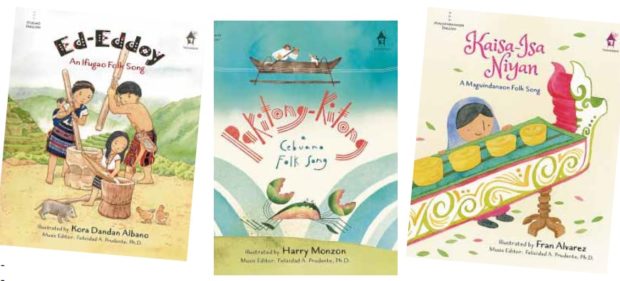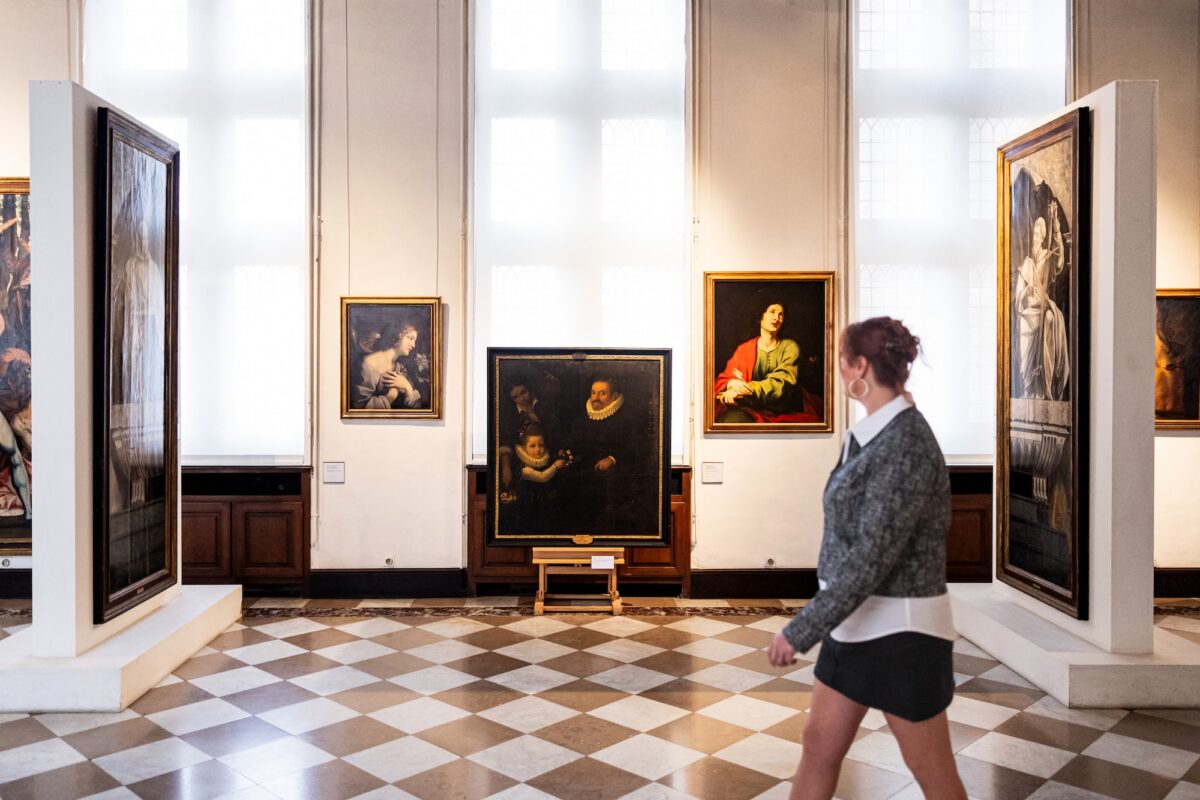
But books can still be acquired online, and that’s how I came across these unique additions to our collection.
Tahanan Books has three titles, specially curated by musicology expert Dr. Felicidad A. Prudente, based on folk songs from Luzon, Visayas and Mindanao. Each song highlights the culture and traditions of the three regions.
Beautifully illustrated, as expected from every Tahanan book I have come across, they also come with simple sheet music at the back. The covers do not scream anything trendy, but they speak to me as a parent and my desire to have decent Filipino literature at home.
We have amassed a number of Filipino books, but not many are reread because they are not popular with my audience of two—8-year-old Jack and 3-year-old Juno.
‘Ed-eddoy’
“Ed-Eddoy,” sung in the language of Kiangan Tuwali, is a tribute to the blessings of abundance showered on the Ifugao people. Kora Dandan Albano illustrates in careful detail the rich tradition of living in the rice terraces.
I’m not familiar with the song, but an online search led me to a video of a group of Filipino women casually singing it on a curb.
Richard Kinnud of Sun Star said that “Ed-eddoy” (an interjection like the English “Oh!”) is a tune about Bugan, a woman portrayed with an identity, belonging to a community, and who can have property such as a rice field.
The typical city kid may not relate to it, but it’s interesting to learn more about a culture that’s part of the country. Plus, the tattoos on the women’s arms were legit and served as another talking point on why people ink.
‘Pakitong-kitong’
Harry Monzon interprets the well-loved children’s song “Pakitong-kitong” as a journey on a fishing boat to catch river crabs in the lush mangrove forests of Cebu.
Now this one’s familiar, the Tagalog version at least, and we had fun singing it by changing the vowels. I didn’t know this was originally Cebuano.
Having recently visited Cebu, we were able to tie in our boat ride and attempts to catch sea creatures with the character’s adventure in the story.
‘Kaisa-isa Niyan’
The drawings of Fran Alvarez evoke the joy of finding harmony in the counting song “Kaisa-isa Niyan.” Sung in the Maguindanaon language, it teaches children simple rhythms that can be played on the kulintang ensemble.
I don’t know this song either, but it’s easy to play on the piano. It has a simple but hypnotic beat. An online search shows videos of it, rendered by the Philippine Madrigal Singers on various occasions.
From the book, we learn that kulintang music was passed down by ear, so there was no documented account of such songs. My son Jack was able to relate how he tries to practice all the songs he knows on the piano daily so he won’t forget them, so he can play them without sheet music.
When life was simple
Playful, humorous, at times wistful, these melodies hark back to a time when life was as simple as counting rusty coins, clanging a gong, and catching crabs for dinner. These rich musical landscapes offer young and old a fresh portal into the ear and soul of Filipino culture.
It’s fun to play them with my kids on the piano—without first consulting the internet to find out how they sound.
We enjoy the Barefoot Books videos on YouTube. They feature sing-along videos of books that are also sold, but can be enjoyed as standalone songs. I like the messages of diversity and inclusion, and the beautiful art. The kids love the catchy rhythms and engaging beats.
Hopefully, Tahanan Books can come up with something similar to accompany the
print incarnations to make the literature more interactive and see the illustrations come to life.
But, as it is, I’m pleasantly surprised that my kids wanted rereads of these, mostly because of the hilarious “Pakitong-kitong.” Perhaps because they aren’t straightforward reads and require instrumental interaction.
I can see these books being appreciated even more in music classes in a school environment.
The folk-song picture books set retails at P350 (or P120 each) on tahananbooks.ph. —CONTRIBUTED













































